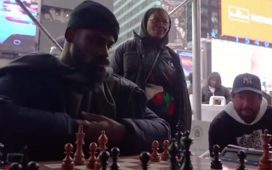
Getty
My organization, the Institute for Humane Studies, is in the business of supporting university professors. So, when Covid-19 hit, we reached out to ask faculty partners what they needed, what was working, and what wasn’t in the unfamiliar terrain of remote teaching.
Much of what we heard echoed the advice they were receiving from their own Centers for Teaching and Learning on the use of breakout groups, discussion boards, asynchronous video lectures, and so on.
The responses I found most interesting, though, were those that betrayed a deeper concern: that teaching online “involves inevitable loss.” This is what J.P. Messina, professor of philosophy at University of New Orleans, told me. He said that it was a loss that was “difficult to quantify or characterize precisely,” but real and perceptible nonetheless. Even when his online discussions went well, he said, “they felt distant.”
Catherine Pakaluk, professor of economics at the Catholic University of America, told me something similar. She said that she had to “work twice as hard […] to get students to participate online.” She noted the irony. “The student on the other side of my Zoom screen is ‘locked in,’ and you have all the tools available to you to reach [them] except the one that humans thrive on most: presence.”
These insights reminded me of William Cronon’s well-known essay “Only Connect,” which spells out, with elegant simplicity, what it means to become a liberally educated person. “[B]eing an educated person means being able to see connections that allow one to make sense of the world and act within it in creative ways.” The ability to listen well, to speak with and learn from anyone, to see through the eyes of others, and to put one’s curiosity in motion to solve complex puzzles is, Cronon observes, all about connecting.
Masterful teachers are those who love nothing more than to coach students to the point that they make such connections instinctively. But that coaching takes presence.

NEW YORK, NY – APRIL 9: Associate Professor Carol Dysinger, right, of New York Universitys Tisch … [+]
Many universities have now committed to going fully or partially remote this fall. Others may be forced to go online if a second wave of Covid-19 hits. If they are to survive, institutions that promise high-quality teaching as their primary value proposition have to come through on that promise. But that’s a tall order when Zoom is the classroom, when that sense of presence Pakaluk describes is so difficult to conjure, and when distractions are so abundant and ready at hand.
Pakaluk anticipates the potential for disengagement by beginning every class with warm-up conversation, asking students how they’re doing. “I never do this in regular class,” she noted, “but I found this practice invaluable online. The students want to feel ‘seen.’” And she finds herself smiling more. “One thousand percent more!” Without body language and hand gestures, “you have to make your face do more work than usual.”
Further, Pakaluk reminded me, human connection is a two-way street. She’ll often share a bit about what’s going on in her life: a new puppy, her son just got accepted to college, her 7-year-old just lost a tooth. And questions, questions, and more questions. Even something obvious, if posed in the form of a question, invites inquiry. “Okay, what does Mill say in line 3 of this paragraph?” Pakaluk will ask. “Yeah, can someone read that?” It’s simple, but questions, even simple ones, keep students from feeling like they are mere vessels for the professor’s instruction.
When I asked him what he had learned from his experience this spring, Messina said, “There are lots of ‘best practices’ out there.” But, he admitted, he “went against almost all of them.” He said that he knew that his class would fail “if it didn’t have students engaging with one another, in real time and in public, about complex and unfamiliar philosophical issues.”
Messina’s advice? “Know what you want students to get out of your class and do what it takes.” For him, that meant having synchronous classes. It meant setting the expectation that each student contributes to each discussion at least twice. This expectation helped to encourage peer-to-peer and not just student-to-instructor engagement.
Messina acknowledged that there are drawbacks to his approach. He had to check in with students to make sure that his expectation for synchronous learning was not unfairly disadvantaging anyone. But, Messina noted, “there are no perfect solutions.”
None of this is to suggest that online instruction can be or should be qualitatively the same as in-person instruction. The point is, rather, that there’s never been a time when Cronon’s imperative—to help students make the connections that allow them to make sense of the world—has been more important. Current circumstances make that job extraordinarily difficult. Masterful teachers like Pakaluk and Messina—the teachers who find a way to be present when circumstances conspire to create distance—will be the ones to figure it out.
Pakaluk is optimistic. “I have seen that with practice and experience we’re all starting to learn the best ‘institutional’ arrangements for online education,” she tells me. “Some will be familiar, some will be new. But the human spirit still yearns for the encounter with great ideas, so we have deep confidence we can do this.”






